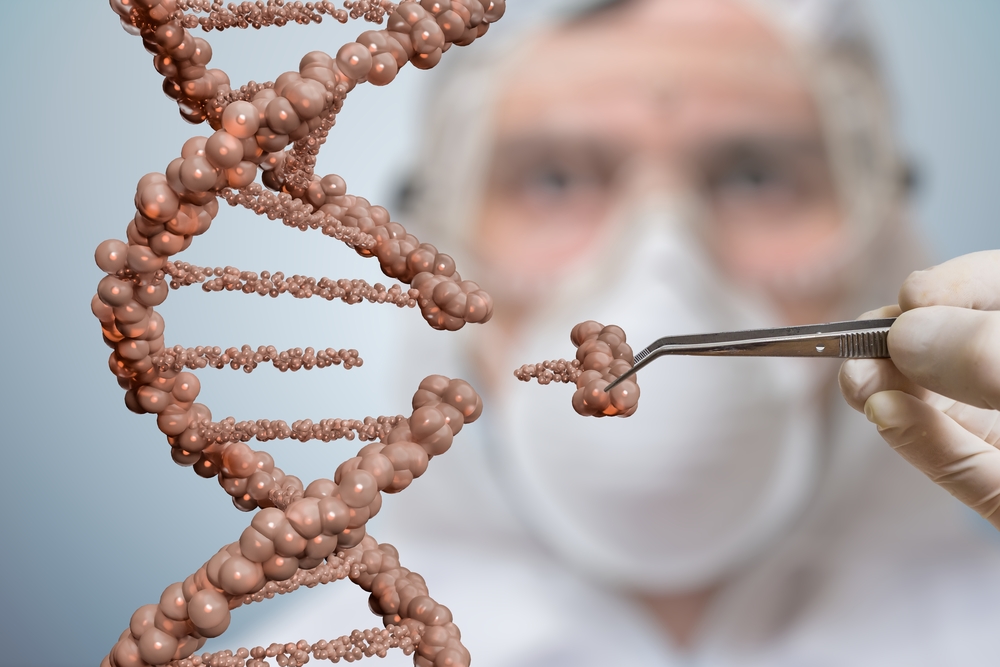CRISPR/Cas9 May Be Better Than Gene Therapy at Restoring FIX Activity

Note: This story was updated Nov. 6, 2020, to clarify key scientific concepts.
The gene-editing tool CRISPR/Cas9 enables a targeted gene insertion approach that may be superior to conventional gene therapy at restoring the activity of factor IX (FIX), the blood-clotting protein missing in people with hemophilia B, according to a study in primates by Intellia Therapeutics.
Using a mouse model of liver regeneration, Intellia investigators also showed that when CRISPR/Cas9 is used to insert the human version of F9 — the gene that encodes FIX — inside liver cells, its levels remain stable, even as these cells proliferate to restore lost tissue.
The data were presented by Anthony Forget, PhD, senior director of genome editing at Intellia, during a talk titled, “A Modular CRISPR/Cas9 Genome Editing Platform for Durable Therapeutic Knockout and Targeted Gene Insertion Applications,” at the 16th Annual Meeting of the Oligonucleotide Therapeutics Society. The 2020 Virtual Conference was held online Sept. 27-30.
CRISPR/Cas9 is a gene-editing tool that can be used to remove, add, or change a portion of the DNA sequence of a gene of interest. It is based on a “cut-and-paste” mechanism, in which the enzyme Cas9 is guided toward a specific DNA region with the help of a small guide RNA molecule. RNA and DNA are both nucleic acids, with RNA being produced from DNA.
This technology is currently being used by Intellia and Regeneron Pharmaceuticals to develop new treatments for different types of hemophilia. The companies recently expanded their original six-year collaboration agreement, originally launched in 2016 to develop, license, and commercialize these potential therapies.
In earlier studies, the companies reported their scientists had successfully used CRISPR/Cas9 to insert the F9 gene into the liver of non-human primates. The inserted gene resulted in the production of human FIX in the animals.
Now, Intellia presented new data from the six-week study that demonstrated the activity of human FIX correlated with the observed protein levels, to normal or even beyond normal limits, in the blood of non-human primates. According to the company, FIX activity levels may be fine-tuned to achieve the desired therapeutic range by adjusting several parameters, such as the doses of CRISPR machinery components.
The investigators also showed that gene insertion mediated by CRISPR/Cas9 can lead to persistent FIX activity levels over time compared with conventional gene therapy that uses adeno-associated virus vectors (AAV) to deliver modified genes to cells.
In a mouse model of liver regeneration, the companies’ scientists demonstrated that unlike conventional gene therapy, CRISPR/Cas9 can facilitate the insertion of gene constructs that remain active inside liver cells, even as they divide and expand in order to restore the tissue that was lost.
In this study, the researchers removed a portion of the animals’ liver to induce tissue regeneration. Within a period of 14 days after the animals had part of their liver removed, the levels of human F9 dropped by 85% with the gene delivered using standard gene therapy. In contrast, when CRISPR/Cas9 was used, human F9 levels remained stable over at least 45 days, the duration of the study.
“The persistence of these edits and durable effects further support our technology’s ability to develop potentially curative single-course therapies, and provide clear differentiation from chronic treatments and traditional AAV gene therapy,” Laura Sepp-Lorenzino, PhD, chief scientific officer at Intellia, said in a press release.
The team saw a similar gene-editing persistence following liver regeneration when using CRISPR/Cas9 to inactivate a gene called TTR, which encodes a protein that when misfolded causes hereditary ATTR amyloidosis. This is the mechanism of action of NTLA-2001, one of the company’s lead therapeutic candidates.






